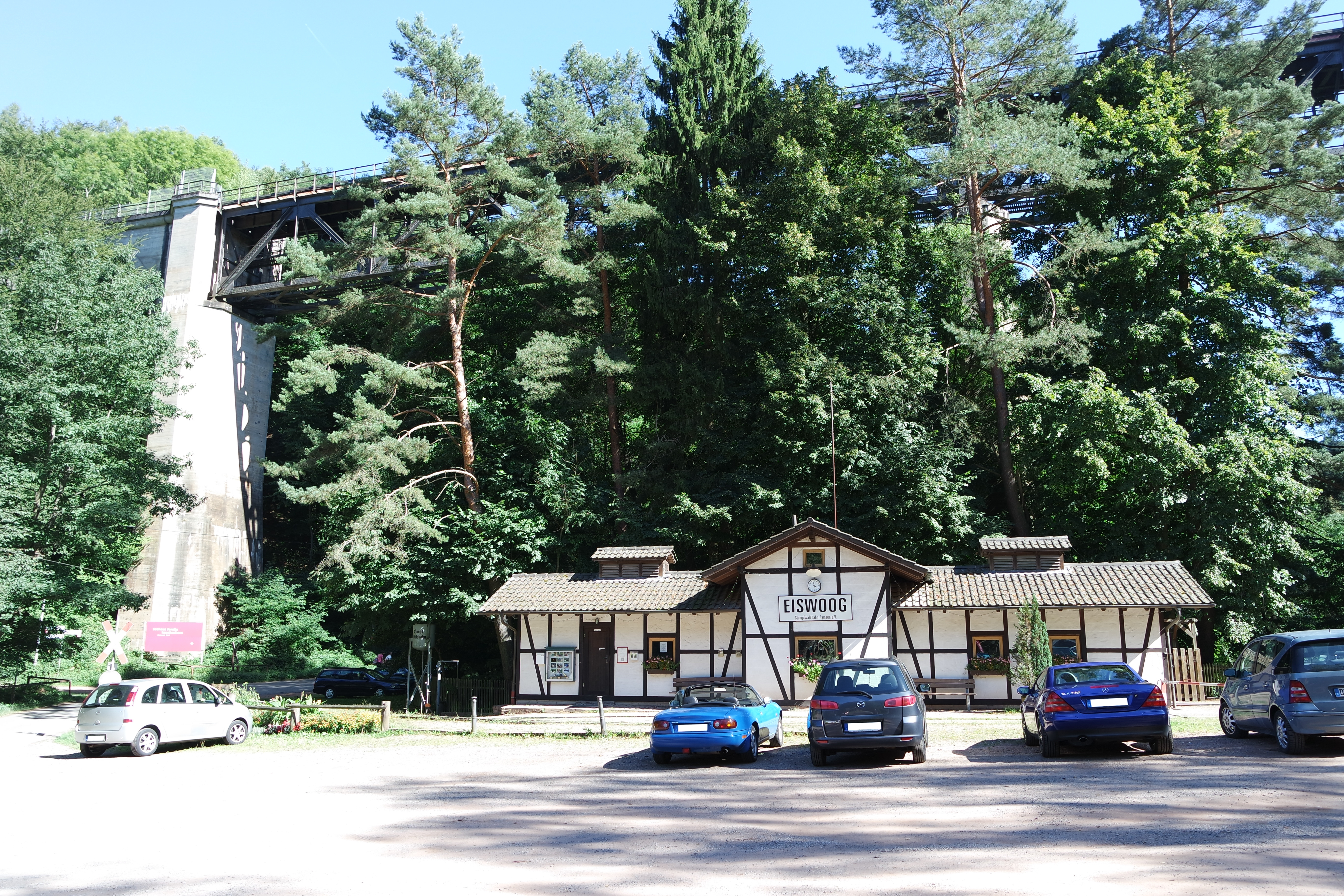|
Tonwaren-Industrie Wiesloch
(TIW AG, originally , abbreviated ) was a brickworks making which existed in Wiesloch, Germany between 1895 and 1989. It was one of the largest and most significant factories in Germany. The factory was located just north of Wiesloch-Walldorf station and was the largest employer in Wiesloch. Raw clay material was excavated from a clay pit in the forest on the north-west side of Wiesloch. This clay material was located at an elevation of 120 metres above sea level within the Upper Rhine Graben. The factory contained one of many industrial 600 mm gauge railways in Germany. Use of the narrow-gauge trains to fetch material from the clay pit finished in 1979. Since 2001 the Wiesloch Feldbahn and Industrial Museum has been based at part of the north end of the site, and since 2016 the Leimbach Park has been built on the south end of the site, with the rest of the area transformed into an industrial zone. Location The brickworks was situated in a concentrated node of industry ac ... [...More Info...] [...Related Items...] OR: [Wikipedia] [Google] [Baidu] |
Wiesloch
Wiesloch (, locally ; South Franconian: ''Wissloch''), is a town in northern Baden-Württemberg, Germany. It is situated 13 kilometres south of Heidelberg. After Weinheim, Sinsheim and Leimen it is the fourth largest town in the Rhein-Neckar-Kreis. It shares Wiesloch-Walldorf station with its neighbouring town Walldorf. Also in the vicinity of Wiesloch are Dielheim, Malsch (bei Wiesloch), Mühlhausen, Rauenberg and Sankt Leon-Rot. Wiesloch's population grew to more than 20,000 when the administration of the area was reorganised in the 1970s. Wiesloch became a ''Große Kreisstadt'' on 1 January 1973, when Altwiesloch, Baiertal, Frauenweiler and Schatthausen were amalgamated with Wiesloch to form the present municipality. History The settlement that is now Wiesloch town centre originated during the expansion of silver mining in the vicinity in the 10th century. Fossil site The fossil remains of the oldest hummingbird found to date, ''Eurotrochilus inexpectatus'', were found ... [...More Info...] [...Related Items...] OR: [Wikipedia] [Google] [Baidu] |
Leimbach (Rhein-Neckar)
Leimbach is a river of Baden-Württemberg, Germany. It passes through Wiesloch and Schwetzingen, and flows into the Rhine in Brühl. Between the cities of Wiesloch and Walldorf the river flows through the Leimbach Park linear-park close to Wiesloch-Walldorf station before flowing northwards between the Mannheim–Karlsruhe–Basel railway and Wiesloch Feldbahn and Industrial Museum. See also *List of rivers of Baden-Württemberg A list of rivers of Baden-Württemberg, Germany: A * Aal * Aalbach * Aalenbach * Ablach * Ach *Acher * Adelbach *Aich * Aid * Aischbach, tributary of the Kinzig * Aischbach, tributary of the Körsch *Aitrach, tributary of the Danube *Aitrach, tr ... References Rivers of Baden-Württemberg Rivers of Germany {{BadenWürttemberg-river-stub ... [...More Info...] [...Related Items...] OR: [Wikipedia] [Google] [Baidu] |
Orenstein & Koppel
Orenstein & Koppel (normally abbreviated to "O&K") was a major Germany, German engineering company specialising in railway vehicles, escalators, and heavy equipment. It was founded on April 1, 1876 in Berlin by Benno Orenstein and Arthur Koppel. Originally a general engineering company, O&K soon started to specialise in the manufacture of railway vehicles. The company also manufactured heavy equipment and escalators. O&K pulled out of the railway business in 1981. Its escalator-manufacturing division was spun off to the company's majority shareholder at the time, Krupp, Friedrich Krupp AG Hoesch-Krupp, in 1996, leaving the company to focus primarily on construction machines. The construction-equipment business was sold to New Holland Construction, at the time part of the Fiat Group, in 1999. Founding and railway work The Orenstein & Koppel Company was a mechanical engineering, mechanical-engineering firm that first entered the railway-construction field, building locomotives a ... [...More Info...] [...Related Items...] OR: [Wikipedia] [Google] [Baidu] |
Builder's Plate
A builder's plate is usually a metal plate that is attached to railway locomotives and rolling stock, bogies, construction equipment, trucks, automobiles, large household appliances, bridges, ships and more. It gives such information as the name of the manufacturer, the place and country of manufacture, the model number, the serial number, as well as the date of manufacture or date of fabrication of the item or unit. Gallery Image:New South Wales Government Locomotive No. 1c.jpg, New South Wales Government Railways Locomotive No. 1. Builders plate 958 File:Kerr Stuart Builder's plate 1327.jpg, Kerr, Stuart and Company File:Lima builder's plate.jpg, Lima Locomotive Works File:NSWGR AD60 Class Locomotive 6040 d.jpg, New South Wales AD60 class locomotive Beyer, Peacock and Company. builder's plate. File:SAR Class GMAM 4140 (4-8-2+2-8-4) BP.jpg, BP and NBL works plate off (South African Class GMA 4-8-2+2-8-4) no. 4140. File:GNR 1744 constructors plate.jpg, NBL builder's plate. Fi ... [...More Info...] [...Related Items...] OR: [Wikipedia] [Google] [Baidu] |
Stumpfwaldbahn Lok
The Stumpfwald Railway (german: Stumpfwaldbahn) is a Narrow gauge railway, narrow gauge heritage railway that has operated since 1996 in the Stumpfwald, a woodland area in the north of the Palatine Forest in the municipality of Ramsen (Pfalz), Ramsen. Course The western end of the Stumpfwald Railway starts at Eiswoog railway station, next to the Eiswoog, eponymous lake. Some years after the line opened, a railway halt was built on the nearby (standard gauge) Eis Valley Railway, which also bears the name ''Eiswoog''. This halt is served by most of the trains on the Eis Valley Railway on Sundays and holidays. On weekdays, however, services on the Eis Valley line ends in Ramsen (Pfalz), Ramsen. The original eastern operating point of the Stumpfwald Railway was ''Bockbachtal'' station, but this was moved further to the east as part of the extension of the line in 2007 and has been converted to a passing loop, which is now the halfway point on the way to Ramsen. Just before Rams ... [...More Info...] [...Related Items...] OR: [Wikipedia] [Google] [Baidu] |

